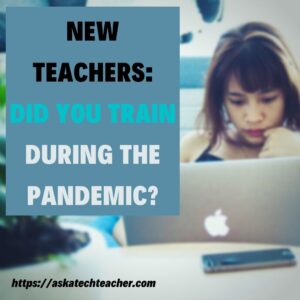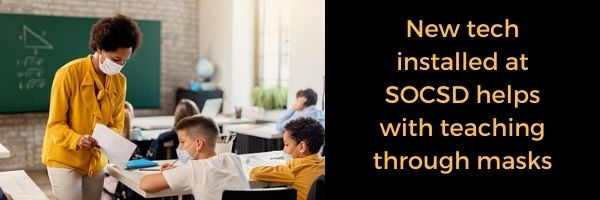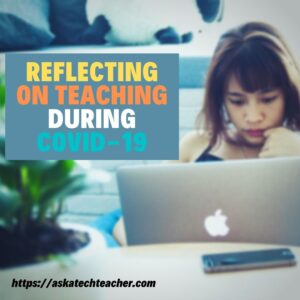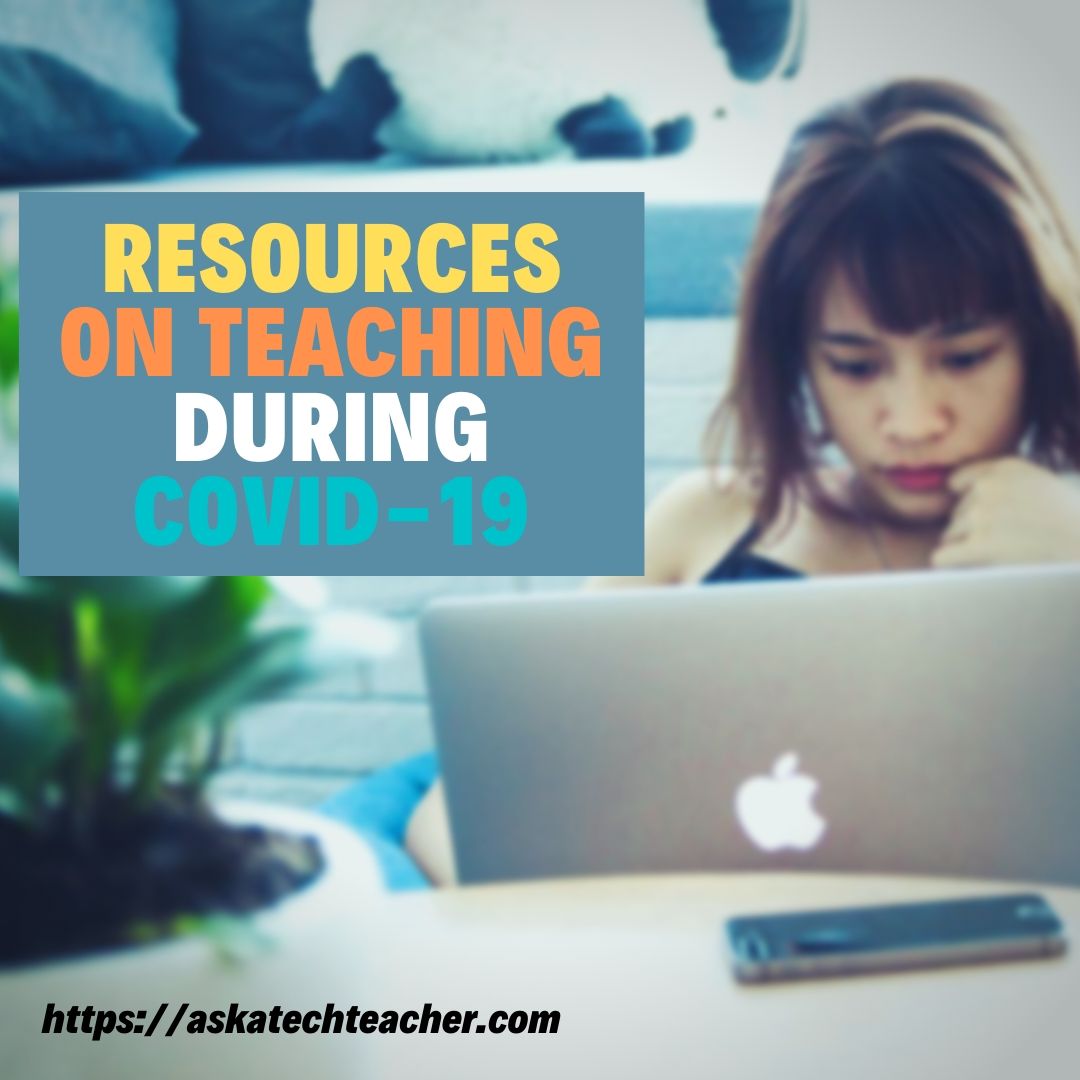
Tag: COVID-19
Coping with COVID in the Classroom

A lot of teachers are also authors. In an effort to spotlight their two hats, I feature teacher-authors on both my writing and education blogs. Guests can write about any topic they’d like as long as it revolves around those skills.
Today, I’d like to introduce Anne Clare, a teacher as well as a historical fiction author. Anne Clare is a native of Minnesota’s cornfields and dairy country. She graduated with a BS in Education in 2005 and set out to teach in the gorgeous green Pacific Northwest, where she and her husband lived. She also serves as a church musician, singing in and occasionally directing choirs, playing piano, organ, and coronet (the last only occasionally, when she forgets how bad she is at it.) After the birth of her second child, she became a stay-at-home mom, and after the birth of the third she became reconciled to the fact that her house would never be clean again, which allowed her to find time to pursue her passion for history and writing while the little people napped. Although she’s back to teaching, she continues to write historical fiction and to blog about WWII history, writing, and other odds and ends at thenaptimeauthor.wordpress.com.
I reviewed her amazing book, Where Shall I Flee, (click for my review and a purchase link) about the battle in Italy during WWII from the perspective of a female nurse. Today, I’m excited to share her story of teaching through the pandemic. With not only apocryphal but statistical stories about the damage done by the pandemic to student learning, I was eager to read about this through the eyes of a teacher in the trenches. I think you’ll enjoy this:
Coping with COVID in the Classroom
 I’ve always found that teaching is a profession that requires some flexibility. Since March of 2020, “flexibility” doesn’t seem like quite a strong enough word for the mental gymnastics required in maintaining any kind of workable learning environment. All of the teachers I know have their own stories of Covid craziness. Here are a few of mine.
I’ve always found that teaching is a profession that requires some flexibility. Since March of 2020, “flexibility” doesn’t seem like quite a strong enough word for the mental gymnastics required in maintaining any kind of workable learning environment. All of the teachers I know have their own stories of Covid craziness. Here are a few of mine.
The First Round
As soon as we heard that our state was going into full lockdown, my school’s faculty started looking for online options. I teach in a small “church school” with just over a hundred students. Small size has its own challenges, but when it came to pivoting to a new teaching plan, it allowed us to adapt quite quickly. Over Spring Break we set up Google Classroom pages, learned how to do Zoom, and created packets of papers for students’ families to pick up and drop off outside the school weekly. By the time break was over, we were ready.
Sort of.
Technical difficulties, struggling students, and the stress of a total change of lifestyle made online learning challenging.
Then there were difficulties with the physical space. My husband worked from home in our bedroom while my eldest daughter did her 4th grade work in her room, my son worked on first grade in his, and my youngest wrapped up her Kindergarten year at our kitchen table, occasionally weeping over the ipad when she couldn’t find the correct sheet. Meanwhile, I tried to record lessons in such a way as to keep my students accountable, tried to keep up with online correcting, and tried to be there to assist my children as needed.
While my faculty and I adapted to provide the best learning situation for our students that we could, I didn’t complain when we decided to end the school year early. It made sense—the loss of sports and extra curriculars meant that we finished our curriculum ahead of schedule anyway. Perhaps, after summer, things would return to normal.
The Long Haul
As I approached the 2020-2021 school year, I hoped (as I’m sure many did) that maybe things could go back to normal. They didn’t.
Share this:
International Education During the Pandemic
Ask a Tech Teacher contributor, Christian Miraglia, a passionate educational consultant for T4Edtech, traveled to Italy and surrounding areas and has some interesting insights into their education efforts during the pandemic:
From An Italian Train: Education during the Pandemic
 I recently returned from a long-awaited trip to Italy in which I spent a considerable amount of time traveling throughout the Tuscany, Umbria, and Lazio provinces. During the first week of travels, I spoke with an educator from Argentina traveling through Europe. The topic of teaching and technology during the pandemic arose. We discussed how the pandemic affected students, parents, and teachers alike in the United States and Argentina. As an educator, he worked in the Office of Education Ministry and thus had a broad view of the pandemic’s impact on Argentina. As we shared our experiences from the past year, two common themes arose.
I recently returned from a long-awaited trip to Italy in which I spent a considerable amount of time traveling throughout the Tuscany, Umbria, and Lazio provinces. During the first week of travels, I spoke with an educator from Argentina traveling through Europe. The topic of teaching and technology during the pandemic arose. We discussed how the pandemic affected students, parents, and teachers alike in the United States and Argentina. As an educator, he worked in the Office of Education Ministry and thus had a broad view of the pandemic’s impact on Argentina. As we shared our experiences from the past year, two common themes arose.
First, students of low socio-economic status bore the brunt of the pandemic. There was a significant problem in Argentina with access to instruction because of connectivity, which was also endemic to the community I served here in the states. Reliable access was such a problem in Argentina that students did not even bother to attend classes. The issue was so severe that institutions could not track the number of students disconnected from the daily educational process. One can only predict the long-term impact of student absenteeism in the foreseeable future. Continuing my travels in Italy, I wondered how the pandemic affected the Italian nation’s educational systems?
As it was, Italy also had similar issues with distance learning. In a comprehensive article written for BMC Public Health Distance learning in Italian primary and middle school children during the COVID-19 pandemic: a national survey, the study revealed gaps in access. Even though over 80% of students had access to some device, connectivity problems still impacted underserved communities. Additionally, many of the affected students were from immigrant families where language barriers were already problematic. Italy’s problems mirrored those of the United States and Argentina in that the communities most affected by the pandemic were the most vulnerable. Although efforts to address the access issue took place, Italy faces the everyday struggle of allocating sufficient funds to upgrade the infrastructure to guarantee access for all students.
Share this:
New Teachers–From Pandemic to the Classroom
 This is a great article for new teachers who might not have seen the traditional classroom experience. One teacher offers tips to help new starters who did their training in lockdown to feel at home in their classroom:
This is a great article for new teachers who might not have seen the traditional classroom experience. One teacher offers tips to help new starters who did their training in lockdown to feel at home in their classroom:
New Teachers: 10 Ways to Claim Your Classroom Space
The first terms as an early career teacher are daunting: and it can be a while until you feel completely settled in your new role. But your classroom is the place you’ll spend the majority of your time, and it’s crucial that you feel ownership of it, as well as at home within it.
Many of you will have carried out a lot of your teacher training remotely – and therefore, may feel a little uncertain about how to claim classrooms as your own. Here’s my advice.
Here’s more advice for new teachers from Ask a Tech Teacher:
6 Tech Best Practices for New Teachers
New Tech Teacher? I Understand You
Technology and Teaching: A Conversation with Teachers
13 Tips for New Tech Teachers You Don’t Want to Miss

Jacqui Murray has been teaching K-18 technology for 30 years. She is the editor/author of over a hundred tech ed resources including a K-12 technology curriculum, K-8 keyboard curriculum, K-8 Digital Citizenship curriculum. She is an adjunct professor in tech ed, Master Teacher, webmaster for four blogs, an Amazon Vine Voice, CSTA presentation reviewer, freelance journalist on tech ed topics, and author of the tech thrillers, To Hunt a Sub and Twenty-four Days. You can find her resources at Structured Learning.
Share this:
Tech to Help With Masks
The pandemic has changed teaching in many ways–remove vs. in-person vs. hybrid for one, the need for internet access in homes for another. Schools struggle to find the right technology to address these many changing needs. One that caught my eye was reported in The Dispatch–technology to address the sometimes garbled communication that results from speaking through masks. Here’s their interesting story:
New tech installed at SOCSD helps with teaching through masks
Starkville High School student Peyton Willoughby sat in his 10th grade English class Thursday not worried about struggling to hear his teacher because of new technology installed in the classroom.
As his teacher discussed poems and literary elements, information flowed throughout speakers across the entire room, giving Willoughby the assurance that he was obtaining all of the necessary material.
“For me, I really love (this new technology),” Willoughby said. “I think it’s absolutely amazing because the teacher can be up and vocal and moving around while still maintaining that audibility … it makes the teaching much more engaging and more enjoyable.”
For more about teaching through COVID, here are a few more articles:
- Teaching During COVID-19
- Teaching Online During COVID-19
- 8 Ways Parents and Teachers Support Remote Teaching
Share this:
Equipment You Need for Online Tutoring
Teaching during the pandemic has turned the iconic job of education on its head. Should you teach at home or in school–or with a hybrid approach? How can you be effective with the new rules required to ensure safety while maximizing the students’ educational journey? Is it safe to enter the classroom? You’ve never taught remotely before–how do you do that and still meet your school’s education standards and curricula?
Many teachers are turning to homeschool co-ops or tutoring programs as reasonable approaches to pursuing a job they love in a way that allows students to succeed. If this is a choice you are making, here are suggestions from one of our Ask a Tech Teacher contributors for equipment you’ll need to succeed in this new approach:
8 Props and Pieces of Equipment for Tutoring Students Online
 The equipment and props you use when teaching your students online can make all the difference when it comes to how successful you are.
The equipment and props you use when teaching your students online can make all the difference when it comes to how successful you are.
They can affect how engaging your lessons are, how much your students enjoy them, and even how professional you appear.
Choosing the right equipment and teaching tools is not just essential – your decisions can make or break your online teaching career.
Most online teaching platforms have basic requirements, like a high-quality headset, web tools, and a reliable internet connection, but there are other things you need to take into account before you start teaching online – things like good lighting and visual teaching aids can go a long way.
Here are eight things you’ll need to become a successful online teacher.
1. A Background
Most online teaching centers require their tutors to have some kind of professional backdrop behind them – this can be a blank wall that you’ve decorated with relevant classroom posters.
You can also set up a bulletin board behind you with your name and some interesting items that say something about your personality, like trinkets and souvenirs that relate to your hobbies. Setting up your virtual classroom can also be a great way to unleash your creativity!
You can also incorporate flags, ABCs, or a reward system into your bulletin board to keep your students more engaged.
Share this:
A Year to Remember, A Year to Reflect: Pandemic Instruction
Ask a Tech Teacher contributor, Christian Miraglia, taught for 36 years before retiring. He has some interesting reflections on the year that was the pandemic:
***
A Year to Remember, A Year to Reflect: Pandemic Instruction
Over the past year teachers have been bombarded by colleagues, administrators, and social media pundits on which platforms can best serve them and their students. As an experienced educator who has been in the forefront of technology integration, this past year seemed like a tidal wave. Nearpod or Pear Deck, Google Classroom or Canvas, Flipgrid or Adobe Spark? What did one do?
Road Map
Once it was determined by my school district that we were continuing with distance learning when the school year started in 2020, there was a flurry of activity from our district in an attempt to create some type of training for teachers, many who were winging it in the Spring 2020 semester. Most of the training was put together to assist teachers with the basics of integrating technology such as using Google Classroom or Canvas. The district stayed away from the mandate of having to use one platform exclusively. As far as the pedagogy for using any type of technology integration, it was lacking. I think this could be said for most school districts. And this gets to my point. How did a teacher decide what was the best fit for their students?
Looking Back on Instructional Design
Now that the school year is over I can genuinely reflect on how I utilized my go to applications and programs. First of all, as a veteran Canvas user I continued on my use of the LMS. For me it served multiple purposes. One, all assignments were created so that students could have access 24/7. I made sure that there were only two assignments a week with the final assignment being a type of assessment. It is important to note that going forward I would record video instructions using Flipgrid for my students who did not attend on a given day. Integrated in the instructions were screen recorded examples of what I wanted students to achieve in the form of the assignment. Canvas’s ability to allow for Learning Tool Interoperability (LTI) with applications such as Flipgrid, EdPuzzle, Google Drive, Quizizz made by decision quite easy. For students having everything in one location was key as it eliminated navigational confusion. Time and time again I heard parents complain about their children having to use four to five different applications and getting lost in the process. I cannot fault them, nor can I fault many of the teachers who had little experience in course design and the pedagogy behind it.
Share this:
How Educators Can Empower Students Through Technology
With education turning on the technology skills of students and teachers, its important to gain a rudimentary understanding of foundational technology. I don’t mean phone apps and games. I mean the basics of how to use the tech tools that are driving learning. Dr. Paul Perry, former teacher, administrator, and nonprofit exec, has put together a brief guide for educators looking to expand learning opportunities for students using technology.
***
 Ready or not, digital transformation has come to education. With the coronavirus pandemic pushing some 1.2 billion students out of the classroom, schools have been forced to make a decade of progress in online learning in just a few short months. You’ve probably seen stories or heard from friends with listless teenagers at home, struggling with the new format. While that’s a reality for many families, it’s not the whole story.
Ready or not, digital transformation has come to education. With the coronavirus pandemic pushing some 1.2 billion students out of the classroom, schools have been forced to make a decade of progress in online learning in just a few short months. You’ve probably seen stories or heard from friends with listless teenagers at home, struggling with the new format. While that’s a reality for many families, it’s not the whole story.
Online learning has been shown to increase retention and tends to take less time. In fact, recent research demonstrates that students retain up to 60% more material through online learning as compared to just 10% in a physical classroom. Because students can control the pace of their learning, the same research showed that e-learning can require 40-60% less time than traditional classroom settings.
That’s a lot of good news about this massive new experiment in learning through technology. For educators looking for more silver lining in the realm of online, we’ve got a few more tips.
Strategies for educators to leverage technology for better learning
Here’s some current context for technology in education:
- Just over 4 out of 5 schools (82%) primarily use digital tools to communication with parents (while 18% use analog methods like letters and phone calls)
- A significant majority of parents (76%) prefer digital communication when it comes to schools (and most—81%–say they’re satisfied with those communication methods)
- A simple majority of parents (59%) that send their kids to schools that use analog communication would prefer a switch to digital communication methods
The data demonstrates an appetite (at least among parents) for the expansion of digital tools in the realm of education. Modern online learning focuses on long-term benefits over short-term costs, encourages adaptation and implementation of skills, as well as the development of personalized experiences.
This raises the question: How exactly should schools invest in technology to keep up?
Share this:
The Challenge of Connecting in the Age of COVID
I met Kiana Berkman in this traumatic time of moving teaching home through an invigorating discussion on education and how it’s changing. Kiana and her tutoring agency (Berktree Learning Center) were already ahead of the curve on that. I asked her to share insights on how COVID-19 is affecting her students and their passion for learning. I think you’ll like what she and her husband, Daniel (partner in the tutoring business) have to say:
***
 There is a popular saying that applies to learning: “you can lead a horse to water, but can’t make him drink.” Any educator knows that you can’t force a student to learn, though that does not stop them from trying anything possible. A teacher could create the most gorgeous lesson plans, and employ all the best known tactics, and there may still be students that don’t want to learn. Yet students are not horses, nor are teachers horse-trainers. They’re both human beings with a latent desire to find and share knowledge. Some students have not accessed this desire yet, and their teachers are trying earnestly to connect with these students on an intellectual level, to release that latent desire. For a teacher, there is no experience more gratifying than helping a student search deep for understanding and watch as they finally discover it!
There is a popular saying that applies to learning: “you can lead a horse to water, but can’t make him drink.” Any educator knows that you can’t force a student to learn, though that does not stop them from trying anything possible. A teacher could create the most gorgeous lesson plans, and employ all the best known tactics, and there may still be students that don’t want to learn. Yet students are not horses, nor are teachers horse-trainers. They’re both human beings with a latent desire to find and share knowledge. Some students have not accessed this desire yet, and their teachers are trying earnestly to connect with these students on an intellectual level, to release that latent desire. For a teacher, there is no experience more gratifying than helping a student search deep for understanding and watch as they finally discover it!
The Distance Before Distance-Learning
Connecting intellectually with students has always been the challenge addressed to teachers, even before social-distancing. Students face innumerable difficulties in their life that conflicts with regular attendance and consistent attention in the classroom. Many of these conflicts come from a barrage of social challenges, ranging from complex family tensions, lack of accessibility to adequate resources due to financial constraint, or just plain old emotional growing pains. Going to school each day is the most consistent life experience for many students, and teachers try their hardest to make the classroom experience as reliably consistent as possible.
Teachers who have the opportunity to work individually with students get a rare opportunity. Classroom sizes have limited the teacher’s reach to individual students, and standardization has normalized an almost industrial perspective of student pass-rates, as if failing students are merely the result of quality control. The more that students and teachers become statistics, the less that their human qualities are recognized and accessed. Needless to say, society has been widening the distance between students and teachers long before the Corona virus made it mandatory.
Share this:
Teaching During COVID-19
Articles on #CoronaVirus you won’t want to miss:
Resources You Need During #COVID19
Teaching Online During #COVID19
Teaching Online During #COVID19–More from my Inbox
#CoronaVirus–This Week’s Inbox
Teaching During #CoronaVirus–An Old Strategy That’s Perfect
13 Teaching Strategies to Shake up Your Remote Teaching
8 Ways Parents and Teachers Support Remote Teaching (coming May 28)
Share this:
Teaching Online During COVID-19
 Teaching during the COVID-19 pandemic is challenging. We educators understand online learning, probably have taken classes this way, but we haven’t yet wrapped our brains around how to make it work in OUR classes. In fact, the biggest question I get from teachers in my online classes and on my blog is:
Teaching during the COVID-19 pandemic is challenging. We educators understand online learning, probably have taken classes this way, but we haven’t yet wrapped our brains around how to make it work in OUR classes. In fact, the biggest question I get from teachers in my online classes and on my blog is:
“How do I do it?”
I know–very broad–but teachers are worried. They are invested in teaching their classes and suddenly it seems impossible to meet yearly goals, build lifelong learners. What can they do to make that happen? To fulfill their personal goals of getting students excited about learning?
Here’s what I’ve heard this past week or so:
- Issues
- Pedagogies for distance learning
- Curricula for online teaching
- Links fellow teachers are using that work
These aren’t comprehensive, just what I’ve heard as most of us are only one-two weeks into this challenging education opportunity.
Issues
“The classroom teacher can’t be replaced by an electronic device.”
That’s not what happens in online teaching. The teacher is as critical or more in an online classroom as they are in the physical class. The old style of online class that was impersonally delivered has been replaced by an active teacher fully involved in the online experience. She is simply in the cloud rather than in the room.











































